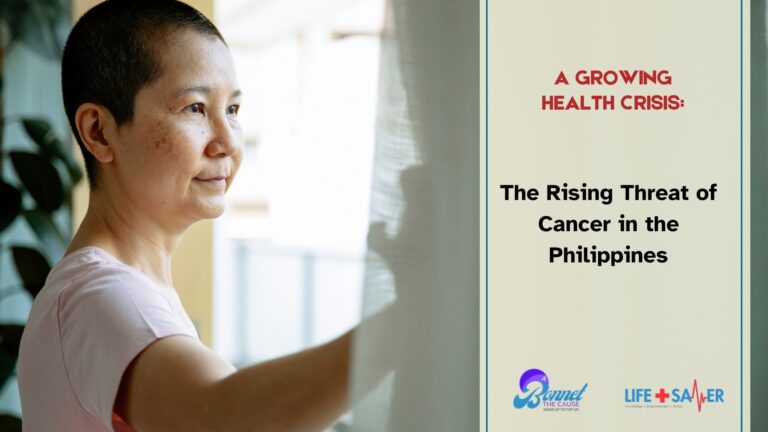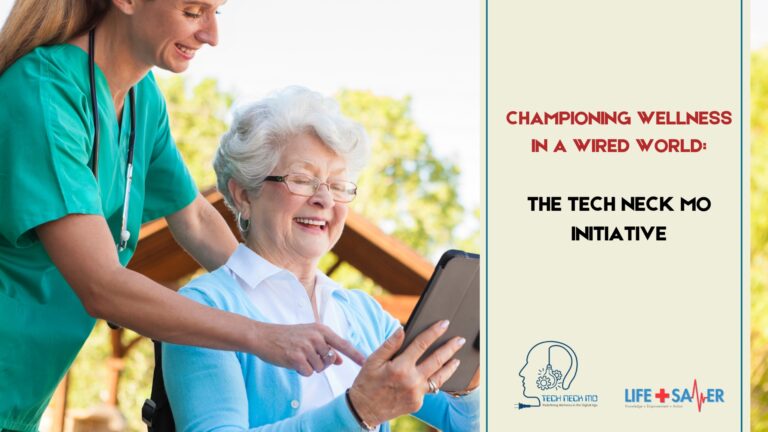The State of Cancer in the Philippines
February is National Cancer Awareness Month in the Philippines, a time to reflect on the impact of this disease and how we can all contribute to the fight against it. Cancer remains a significant public health concern in the Philippines, ranking as the third leading cause of death1. In 2022 alone, over 110,000 Filipinos succumbed to cancer, with nearly 190,000 new diagnoses1. This alarming statistic highlights the need for increased awareness, early detection, cancer prevention, and improved access to quality cancer care.
Cancer Prevalence and Mortality in the Philippines
The Philippines has a high rate of premature cancer-related deaths compared to other countries2. In 2020, the overall cancer incidence rate was 185.4 per 100,000 people, while the mortality rate was 112.9 per 100,000 people3. These figures underscore the significant burden that cancer places on individuals, families, and the healthcare system in the Philippines. Shockingly, 50-60% of cancer deaths in the Philippines are considered “premature,” meaning they could have been prevented through early detection and timely intervention2. While the Philippines has a higher rate of premature cancer deaths compared to Cambodia, it is significantly lower than in Singapore, highlighting the need for continued efforts to improve cancer control in the country2.
Most Common Types of Cancer in the Philippines
The most common types of cancer in the Philippines vary in incidence and mortality rates. Here’s a closer look at the leading cancer types affecting Filipinos:
| Cancer Type | Incidence Rate | Mortality Rate | Brief Description |
|---|---|---|---|
| Breast Cancer | 60.3 per 100,000 | 21.5 per 100,000 | The most common cancer among Filipino women, often characterized by lumps in the breast, changes in breast shape, or unusual nipple discharge3. |
| Lung Cancer | 37.7 per 100,000 | 33.6 per 100,000 | The leading cause of cancer deaths among Filipino men, with symptoms including persistent cough, chest pain, and difficulty breathing3. |
| Colorectal Cancer | Not available | Not available | The third most common cancer in both men and women, with symptoms like changes in bowel habits, blood in the stool, and abdominal pain4. |
| Liver Cancer | Not available | Not available | A significant concern in the Philippines, with higher incidence rates than in Caucasian populations5. |
| Cervical Cancer | Not available | Not available | The second most common cancer in females and the most common cancer of the female genital tract6. |
| Prostate Cancer | Not available | Not available | Filipino American men have the highest incidence and death rate from prostate cancer among Asian American groups5. |
| Stomach Cancer | Not available | Not available | Stomach cancer is among the top 10 most common cancers in the Philippines7. |
| Oral Cavity Cancer | Not available | Not available | Oral cavity cancer is among the top 10 most common cancers in the Philippines7. |
| Ovarian Cancer | Not available | Not available | Ovarian cancer is among the leading cancer sites/types in the Philippines8. |
| Leukemia | Not available | Not available | Leukemia is among the leading cancer sites/types in the Philippines8. |
In addition to these, the leading cancer site mortalities in the Philippines include lung, liver, breast, leukemia, stomach, cervix uteri, and colon8. This data highlights the diverse types of cancer affecting Filipinos and the need for comprehensive cancer control strategies.
Cancer Risk Factors
Understanding the risk factors associated with cancer is crucial for prevention. Some risk factors for cancer in the Filipino population include:
- Age: Cancer risk generally increases with age4.
- Family history: A family history of cancer, especially among first-degree relatives, can significantly increase an individual’s risk7. For individuals with a known family history of hereditary cancer, genetic testing is often recommended to assess their risk and guide preventive measures10.
- Lifestyle choices: Smoking, unhealthy diet, lack of physical activity, and alcohol consumption are significant risk factors for various cancers5.
- Genetic mutations: Certain genetic mutations, such as BRCA1 and BRCA2, can increase the risk of breast and ovarian cancers4.
- Infections: Infections like human papillomavirus (HPV) can increase the risk of cervical cancer6.
- Environmental and occupational factors: Exposure to certain chemicals, pollutants, and radiation can increase cancer risk5. Studies have shown that Filipinos, particularly those working in healthcare, may have an increased risk of thyroid cancer due to occupational exposure to radiation12.
Cancer Prevention Strategies
Effective cancer prevention strategies involve adopting healthy habits, minimizing exposure to risk factors, and undergoing regular screenings. Here are some key strategies for cancer prevention in the Philippines:
- Healthy lifestyle: Maintaining a healthy weight, engaging in regular physical activity, and consuming a balanced diet rich in fruits, vegetables, and whole grains can significantly reduce cancer risk13. The American Cancer Society recommends a healthy eating pattern that includes a variety of fruits and vegetables, whole grains, and lean protein while limiting red and processed meat, sugary drinks, and highly processed foods14.
- Tobacco cessation: Smoking is a major risk factor for various cancers, and quitting smoking is crucial for prevention5.
- Sun protection: Protecting the skin from excessive sun exposure can reduce the risk of skin cancer13.
- Vaccinations: Vaccinations against HPV and hepatitis B can help prevent cervical and liver cancers, respectively10.
- Early detection: Regular cancer screenings, such as mammograms, Pap smears, and colonoscopies, can help detect cancer at an early stage when treatment is most effective15. In the Philippines, cancer screening programs include Pap smears and visual inspection with acetic acid for cervical cancer detection15.
Cancer Treatment Options and Support Services
Cancer treatment in the Philippines involves a multidisciplinary approach, with various options available depending on the type and stage of cancer. These options include:
- Surgery: This involves the removal of cancerous tissue16.
- Radiation therapy: This uses high-energy rays to kill cancer cells16.
- Chemotherapy: This uses drugs to destroy cancer cells16. Chemotherapy can be used in various ways, such as before surgery to shrink tumors, after surgery to kill remaining cancer cells, as the primary treatment for certain cancers, or to manage metastatic cancer and alleviate symptoms17.
- Hormone therapy: This is used to block or reduce hormones that fuel certain cancers16.
- Immunotherapy: This helps the body’s immune system fight cancer17.
- Targeted therapy: This uses drugs to target specific molecules involved in cancer growth17.
The choice of treatment depends on various factors, including the type and stage of cancer, the patient’s overall health, and their preferences. A multidisciplinary team of specialists, including medical oncologists, surgeons, radiation oncologists, nurses, and other healthcare professionals, collaborates to provide comprehensive and personalized cancer care18. Other disciplines involved in cancer care include pathology specialists, pain specialists, psychosocial counselors, and rehabilitation specialists18.
Several support services are available in the Philippines to assist cancer patients and their families. These include:
- Philippine Cancer Society: This non-profit organization provides education, patient support, and advocacy20. The Philippine Cancer Society has been a pioneer in innovative programs such as cancer registry, tobacco control, hospice care, and patient navigation21.
- Philippine Society of Medical Oncology: This organization offers support programs and connects patients with medical oncologists22. The Philippine Society of Medical Oncology is a member of the Cancer Coalition Philippines, which collaborates with other organizations to support cancer programs and advocate for patients’ needs22.
- ICanServe Foundation: This advocacy group focuses on breast cancer support, providing education, financial assistance, and community programs23.
- The Medical City Cancer Support Group: This group provides emotional support and resources for cancer patients and their families24.
- Philippine Cancer Center: This government institution provides comprehensive cancer care, research, and training25.
- Augusto P. Sarmiento Cancer Institute Cancer Support Group: This support group offers a platform for cancer patients and their loved ones to connect and find support24.
Financial Burden of Cancer
Cancer treatment can be expensive, and the financial burden of cancer care is a significant concern in the Philippines. Over 40% of cancer patients in the Philippines experience financial catastrophe due to the high cost of treatment1. This financial toxicity can have a devastating impact on patients and their families, leading to debt, poverty, and delayed or forgone care.
Recognizing this challenge, the Philippine government has implemented initiatives to provide financial assistance to cancer patients. The National Integrated Cancer Control Act (NICCA) of 2019 aims to improve access to cancer care and provide financial support through programs like the Cancer Assistance Fund26. These programs are crucial for ensuring that all Filipinos have access to essential cancer care, regardless of their financial situation.
Philippine Cancer Control Program
The Philippine Cancer Control Program (PCCP) is a comprehensive program established to reduce cancer morbidity and mortality in the Philippines28. The PCCP focuses on primary, secondary, and tertiary prevention strategies, including:
- Primary prevention: This involves promoting healthy lifestyles, preventing exposure to carcinogens, and implementing vaccination programs.
- Secondary prevention: This focuses on early detection through screening programs and prompt treatment of pre-cancerous lesions.
- Tertiary prevention: This involves managing cancer to prevent complications, improve quality of life, and provide palliative care.
The PCCP also emphasizes public education and awareness campaigns, social mobilization, and legislative measures to address cancer risk factors and promote early detection28.
Commonly Asked Questions about Cancer
1. What is cancer?
Cancer is a disease characterized by the uncontrolled growth and spread of abnormal cells. These cells can invade and damage surrounding tissues and organs13.
2. What causes cancer?
Cancer is caused by a complex interplay of genetic and environmental factors. These factors can include age, family history, lifestyle choices, exposure to carcinogens, and certain infections10.
3. Is cancer contagious?
No, cancer is not contagious. It cannot be transmitted from one person to another like an infectious disease10.
4. Can cancer be cured?
Yes, many cancers can be cured, especially when detected early. Treatment options and outcomes vary depending on the type and stage of cancer. Advances in cancer treatment have significantly improved survival rates10.
5. What are the stages of cancer?
Cancer is typically staged from 0 to IV, with higher stages indicating more advanced disease. Stage 0 indicates cancer in situ, while stage IV indicates metastatic cancer that has spread to other parts of the body10.
6. What are the side effects of cancer treatment?
Side effects of cancer treatment can vary depending on the type of treatment. Common side effects include fatigue, nausea, hair loss, pain, and weakened immune system16.
7. How can I support someone with cancer?
Providing emotional support, practical help, and accurate information can be invaluable for someone with cancer. Listening, offering encouragement, and helping with daily tasks can make a significant difference13.
Myths and Misconceptions about Cancer
Myth: Cancer is always a death sentence.
Fact: Many cancers are treatable and curable, especially when detected early. Advances in cancer treatment have significantly improved survival rates27.
Myth: Cancer is caused by stress.
Fact: While stress can affect overall health, it is not a direct cause of cancer. However, chronic stress can weaken the immune system, potentially making individuals more susceptible to infections that may increase cancer risk.
Myth: Cancer is contagious.
Fact: Cancer is not contagious and cannot be transmitted from one person to another.
Myth: All tumors are cancerous.
Fact: Tumors can be benign (non-cancerous) or malignant (cancerous). Benign tumors do not spread to other parts of the body.
Myth: Sugar feeds cancer.
Fact: While cancer cells use sugar for energy, there is no evidence that consuming sugar causes cancer or makes it worse. However, a diet high in sugar can contribute to weight gain, which is a risk factor for some cancers.
How Everyone Can Help in the Fight Against Cancer
Everyone can play a role in the fight against cancer. Here are some ways to contribute:
- Support patients and their families: Offer emotional support, practical help, and companionship to those affected by cancer.
- Raise awareness: Share accurate information about cancer prevention, early detection, and treatment options.
- Advocate for policies: Support policies that promote cancer research, prevention, and access to affordable care.
- Participate in fundraising events: Contribute to organizations that support cancer research and patient care.
- Volunteer your time: Offer your skills and time to organizations that assist cancer patients and their families.
Life-Saver Events Management Services and “Bonnet The Cause”
Life-Saver Events Management Services (Life+Saver) is committed to raising cancer awareness and supporting Filipinos battling cancer. Their “Bonnet The Cause” program is a fundraising campaign that crafts custom bonnets with cancer ribbons of different colors, symbolizing the various types of cancer29. This program aims to raise awareness and provide support to cancer patients and their caregivers while raising funds for cancer care facilities29.
To learn more about the “Bonnet The Cause” program and how to get involved, individuals can contact Life-Saver Events Management Services through their website at lifesaverph.com29. By supporting this program, you can contribute to raising awareness and providing support to those affected by cancer in the Philippines.
Conclusion
Cancer remains a significant challenge in the Philippines, but through collective efforts, we can make a difference. By raising awareness, promoting prevention strategies, supporting research, and providing compassionate care, we can strive to reduce the burden of cancer and improve the lives of those affected by this disease. Initiatives like the “Bonnet The Cause” program offer valuable opportunities for individuals to get involved, raise awareness, and support Filipinos battling cancer. It is through such collaborative efforts that we can move towards a future where cancer is no longer a leading cause of death and suffering in the Philippines.
Works Cited
1. Financial Sequelae of Cancer for Patients’ Family Members and Caregivers: A Focus on the Philippines | JCO Global Oncology – ASCO Publications, https://ascopubs.org/doi/10.1200/GO.24.00074
2. ‘High rate’ of premature cancer deaths in PH alarming — gov’t think tank, https://www.pids.gov.ph/details/news/in-the-news/high-rate-of-premature-cancer-deaths-in-ph-alarming-gov-t-think-tank
3. Country fact sheet: Philippines – CanScreen5, https://canscreen5.iarc.fr/?page=countryfactsheet&q=PHL
4. Common Types of Cancer in the Philippines | Oona Insurance, https://myoona.ph/blog/health/common-types-of-cancer-philippines/
5. Culture-Specific of Health Risk – Geriatrics, https://geriatrics.stanford.edu/ethnomed/filipino/health_risk_patterns.html
6. CANCER REGISTRATION IN THE PHILIPPINES, https://journal.waocp.org/article_29536_a65dff15602d7e1b371a1b2e70496674.pdf
7. Epidemiological Risk Factors for Cancers of the Lung, Breast, Colon-rectum & Oral cavity: A case-control study in the Philippines | Acta Medica Philippina, https://actamedicaphilippina.upm.edu.ph/index.php/acta/article/view/7387
8. Cancer and the Philippine Cancer Control Program | Japanese Journal of Clinical Oncology, https://academic.oup.com/jjco/article/32/suppl_1/S52/881618
9. Traditional breast cancer risk factors in Filipina Americans compared to Chinese and Japanese Americans in Los Angeles County, https://pmc.ncbi.nlm.nih.gov/articles/PMC5135595/
10. 10 Common Questions About Cancer, Answered | Fox Chase Cancer Center – Philadelphia PA, https://www.foxchase.org/blog/10-common-questions-about-cancer-answered
11. Causes of Cervical Cancer in the Philippines: a Case-Control Study – Oxford Academic, https://academic.oup.com/jnci/article/90/1/43/1081185
12. Characterization of mortality and high-risk characteristics of thyroid cancer in Filipinos using the California Cancer Registry – Frontiers, https://www.frontiersin.org/journals/public-health/articles/10.3389/fpubh.2022.1104607/full
13. 8 questions about cancer answered | Canadian Cancer Society, https://cancer.ca/en/about-us/stories/2022/8-questions-about-cancer-answered
14. Cancer: Frequently Asked Questions – University of Rochester Medical Center, https://www.urmc.rochester.edu/encyclopedia/content?contenttypeid=35&contentid=FAQGeneralCancer
15. Epidemiology, prevention and treatment of cervical cancer in the Philippines – PMC, https://pmc.ncbi.nlm.nih.gov/articles/PMC2676501/
16. Navigating Cancer Treatments in the Philippines – Perpetual Help Medical Center, https://phmc.com.ph/blog/cancer-treatments-in-the-philippines/
17. Treatment Options – Philippine Society of Medical Oncology, https://psmo.org.ph/patients/treatment-options/
18. Treatment Modalities & Facilities – Philippine Cancer Society, https://www.philcancer.org.ph/index.php/support/treatment-modalities-facilities
19. Achieving health equity in cancer care in the Philippines – PMC – PubMed Central, https://pmc.ncbi.nlm.nih.gov/articles/PMC10292855/
21. Philippine Cancer Society | UICC, https://www.uicc.org/membership/philippine-cancer-society
22. Patient Support Programs and Groups – Philippine Society of Medical Oncology, https://psmo.org.ph/patients/patient-support-programs-and-groups/
23. ICanServe Foundation Breast Cancer Support Philippines, https://www.icanservefoundation.org/
24. Join Our Cancer Support Group – The Medical City, https://www.themedicalcity.com/tmc-institutes/apsci/patient-services/personalized-cancer-care-services/cancer-support-group
25. Philippine Cancer Center | As mandated by the Republic Act 11215 or the National Integrated Cancer Control Act (NICCA), the Philippine Cancer Center shall be established under the control and supervision of the DOH, and Its services shall be complemented by designated comprehensive cancer care centers including regional cancer centers and specialty cancer centers, cancer treatment units, and, https://philcancercenter.gov.ph/
26. DOH, WHO launch 2024-2028 National Integrated Cancer Control Program (NICCP) Strategic Framework – World Health Organization (WHO), https://www.who.int/philippines/news/detail/14-02-2024-doh–who-launch-2024-2028-national-integrated-cancer-control-program-(niccp)-strategic-framework
27. Achieving health equity in cancer care in the Philippines – ecancer, https://ecancer.org/en/journal/article/1547-achieving-health-equity-in-cancer-care-in-the-philippines/pdf
28. The Philippine Cancer Control Program – ICCP Portal, https://www.iccp-portal.org/system/files/plans/The-Philippine-Cancer-Control-Program.pdf
29. Life+Saver Philippines – Empowering Communities. Saving Lives., https://www.lifesaverph.com/







